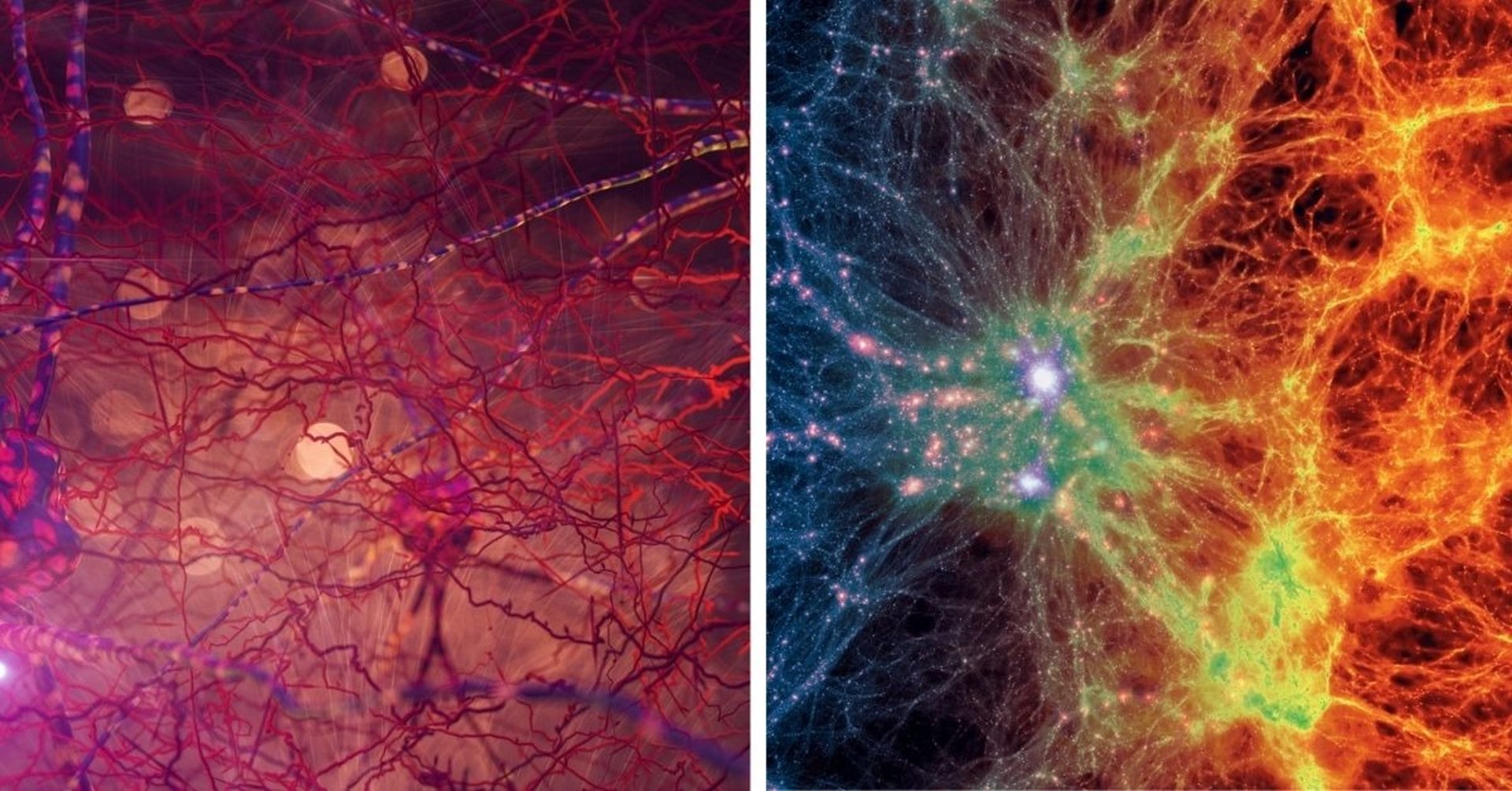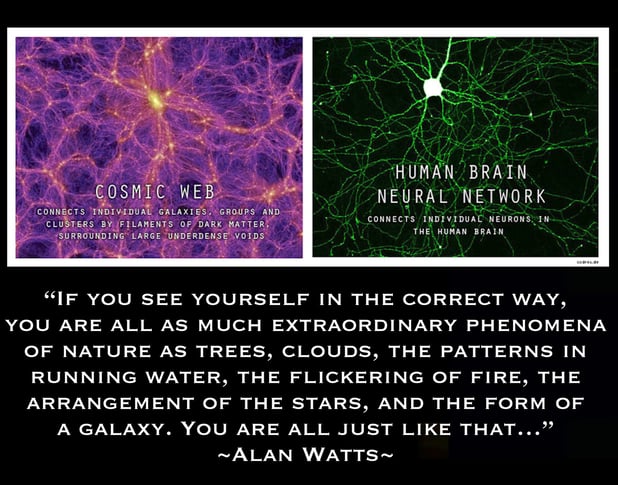
The Brain and the Universe: Unraveling Their Intricate Similarities
Have you ever pondered the fascinating connection between the human brain and the vastness of the universe? While one is a complex organ inside our skulls and the other is an unimaginably vast expanse of stars, galaxies, and cosmic phenomena, their similarities in structure and function are nothing short of remarkable.
COSMOSNATUREBIOLOGYCONSCIOUSNESS
Anand Maity
3/26/20254 min read



In our previous blog, we teased the idea that these two systems—brain and universe—share intriguing parallels. Today, we’re diving deep into this topic, exploring the ways in which the brain and the universe exhibit striking similarities, raising thought-provoking questions, and leaving you on edge for our next blog topic.
The Complexity of Both Systems
One of the most profound comparisons between the brain and the universe is their complexity. The human brain contains approximately 86 billion neurons, each connected to billions of others, forming a web of connections that can be more intricate than the actual structure of the universe itself. Similarly, the universe comprises countless galaxies, each containing trillions of stars, with matter and energy interconnected in ways that scientists are still unraveling.
Both systems exhibit complexity that defies simple explanation, yet they function seamlessly under certain conditions. The brain processes information through neural networks, while the universe operates through fundamental physical laws. This underlying complexity sets the stage for a deeper exploration of their parallels.
Nonlinearity: A Shared Trait
The brain and the universe don’t follow predictable patterns in the same way linear systems do. In the brain, nonlinear processes such as synapses firing and neurons activating exponentially increase the potential for complex behaviors. Similarly, the universe is governed by nonlinear laws, such as quantum mechanics and gravitational interactions that can lead to unpredictable outcomes, like black holes or cosmic collisions.
This shared trait of nonlinearity highlights a fascinating aspect of both systems: they are inherently dynamic and adaptive, capable of generating intricate patterns from simple rules. Whether it’s the brain coordinating movements or the universe expanding over time, nonlinear processes are key to their functionality.
The Emergence of Patterns
One of the most captivating similarities between the brain and the universe is their tendency to self-organize into complex patterns. In the brain, this manifests as the emergence of consciousness from simple neural connections, while in the universe, it’s seen in the formation of galaxies, planetary systems, and even the distribution of matter across cosmic scales.
This principle of emergence suggests that complexity arises spontaneously from simpler interactions. For example, in the brain, neurons firing in unison can lead to coordinated behaviors like synchronized heartbeats or the rhythmic movements of a dance ensemble. In the universe, similar emergent phenomena include the formation of stars and the birth of galaxies through gravitational collapses.
Information Encoding: A Cosmic Connection
The brain encodes information in neural circuits, storing vast amounts of data that shape our perceptions and actions. Similarly, the universe encodes information in the form of electromagnetic waves, cosmic particles, and spacetime curvature. Both systems rely on intricate ways to store and transmit information, from the brain’s use of neurons and neurotransmitters to the universe’s use of light and gravitational waves.
This similarity raises an intriguing question: Could there be a universal mechanism for encoding information that is expressed in both biological and cosmic systems? If so, what does this imply about the fundamental nature of existence?
Adaptability and Resilience
The brain and the universe also share remarkable adaptability. The human brain adapts to new experiences, learning from mistakes, and evolving over a lifetime. It’s this ability that allows us to navigate complex environments and survive challenges. Similarly, the universe has shown an incredible capacity for adaptation, surviving massive cosmic events like supernovae and black hole formations while maintaining equilibrium through mechanisms like dark energy.
This resilience highlights how both systems are designed to thrive under dynamic conditions, constantly evolving to meet new challenges and opportunities.
Key Takeaways:
Complexity and Nonlinearity: Both the brain and the universe exhibit intricate complexity and rely on nonlinear processes to function effectively.
Emergence of Patterns: These systems self-organize into complex patterns, suggesting a universal principle of emergence.
Information Encoding: Both encode information in unique yet interconnected ways, hinting at shared mechanisms for data storage and transmission.
Adaptability and Resilience: They possess remarkable abilities to adapt and survive, evolving over time while maintaining their core functions.
The Big Question:
These similarities between the brain and the universe—two systems that seem worlds apart—are not just coincidental. Could they point to a deeper, universal principle at play? If so, what does this mean for our understanding of both biology and cosmology?
Conclusion:
As we’ve explored, the parallels between the human brain and the vast universe are striking yet profound. They remind us that complexity and self-organization are not unique to life as we know it but may be fundamental to the nature of existence itself.
While these comparisons challenge our understanding of both biology and cosmology, they also leave us with more questions than answers. For instance, what does this shared complexity imply about the origins of consciousness or the origins of the universe? Are there underlying principles that govern both systems, suggesting a deeper connection between them?
These questions are not just academic; they challenge us to rethink our place in the cosmos and how we relate to it as thinking beings. As we continue to explore these frontiers, one thing is clear: the study of both the brain and the universe offers a window into the mysteries of existence—a journey that’s as awe-inspiring as it is mysterious.
Teaser for Next Blog:
In our next blog, we’ll dive into another intriguing topic: The Mysteries of Phi (Φ)—the golden ratio, a mathematical constant found in nature, art, and architecture. This fascinating ratio has captivated mathematicians, artists, and architects alike, but its origins and purposes remain shrouded in mystery. Could it hold the key to understanding the universe’s deepest patterns? Stay tuned to find out!
